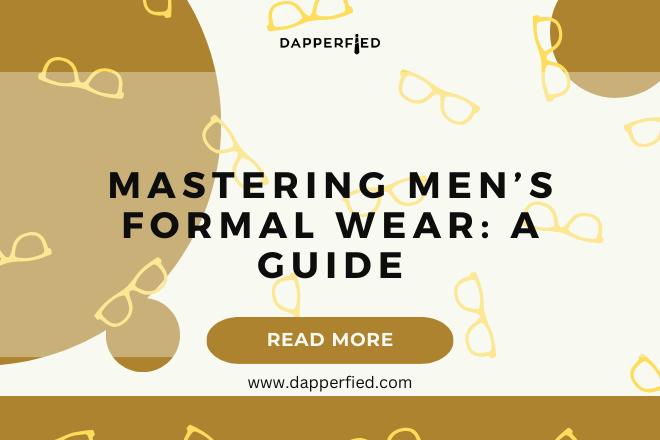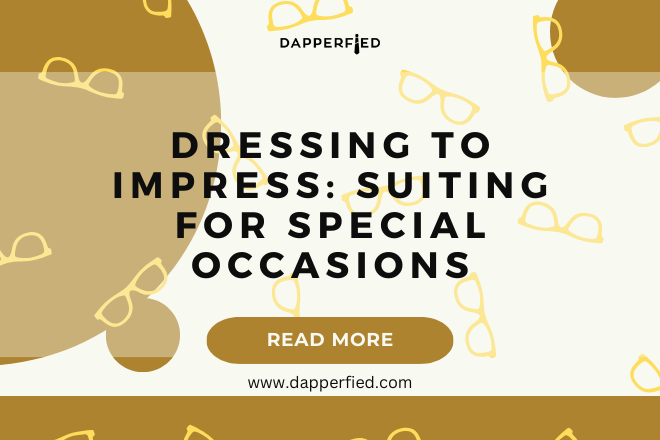
Men's Style
Mastering the Art of Suit Selection: How to Choose the Perfect One
A well-fitted suit is an essential wardrobe staple for any man. It has the power to transform a man’s appearance, making him look sharp, confident, and put-together. Whether it’s for a job interview, a wedding, or a formal event, investing in a suit that fits well and flatters your body type is crucial.
When a suit fits properly, it enhances your natural features and creates a streamlined silhouette. It can make you appear taller, slimmer, and more polished. On the other hand, an ill-fitting suit can make you look sloppy and unprofessional. It’s important to take the time to find a suit that not only looks good but also feels comfortable.
Key Takeaways
- A well-fitted suit is important for both personal and professional occasions.
- Understanding your body type is crucial in selecting the right suit style.
- Classic and contemporary suit styles offer different looks and can be customized to fit your preferences.
- Customizing your fit through tailoring is key to achieving a polished look.
- Budgeting and shopping strategies can help you find the perfect suit without breaking the bank.
Suit Selection Tips: Understanding Your Body Type
Different body types require different suit styles. Understanding your body type is the first step in finding a suit that flatters your physique. Here are some tips for selecting a suit based on your body type:
1. Athletic Build: If you have broad shoulders and a narrow waist, you have an athletic build. Look for suits with structured shoulders and a slim waistline to accentuate your V-shaped physique. Avoid boxy or loose-fitting suits that can make you look bulky.
2. Slim Build: If you have a slender frame, opt for suits with slim lapels and a tailored fit. Avoid oversized suits that can overwhelm your frame. Consider choosing fabrics with patterns or textures to add dimension to your look.
3. Larger Build: If you have a larger build, look for suits with wider lapels and a looser fit. Avoid slim-fit suits that can be too tight and uncomfortable. Opt for darker colors and vertical stripes to create a slimming effect.
4. Shorter Height: If you are on the shorter side, choose suits with shorter jacket lengths and higher button stances to create the illusion of height. Avoid long jackets that can make you appear even shorter. Opt for slim-fit trousers with a shorter break to elongate your legs.
Men’s Suiting Styles: Classic vs. Contemporary
When it comes to suit styles, there are two main categories: classic and contemporary. Classic suit styles are timeless and versatile, while contemporary suit styles are more modern and trendy. Here are some tips for choosing the right suit style for your needs:
1. Classic Suit Styles: Classic suit styles include the single-breasted, two-button suit and the double-breasted suit. These suits have been around for decades and are considered timeless. They are suitable for any occasion, from formal events to business meetings. Classic suits are characterized by their clean lines, traditional lapels, and conservative colors.
2. Contemporary Suit Styles: Contemporary suit styles include the slim-fit suit and the three-piece suit. These suits are more fashion-forward and cater to the modern man. Slim-fit suits have a narrower cut and a shorter jacket length, creating a sleek and streamlined look. Three-piece suits include a vest, adding an extra layer of sophistication to your outfit.
When choosing between classic and contemporary suit styles, consider your personal style, the occasion, and your body type. Classic suits are a safe bet for any man, while contemporary suits can add a touch of trendiness to your look.
Tailored Suit Guide: Customizing Your Fit
| Measurement | Ideal Fit | Acceptable Fit |
|---|---|---|
| Shoulder Width | Shoulder seam sits at edge of shoulder bone | Shoulder seam sits slightly off shoulder bone |
| Sleeve Length | Sleeve ends at wrist bone | Sleeve ends slightly above or below wrist bone |
| Jacket Length | Jacket covers buttocks and ends mid-crotch | Jacket ends slightly above or below mid-crotch |
| Pant Length | Pant hem rests on top of shoe with slight break | Pant hem rests slightly above or below shoe with no break |
| Waist Fit | Pants sit comfortably at natural waistline | Pants sit slightly above or below natural waistline |
While off-the-rack suits can be convenient, they often require some alterations to achieve the perfect fit. Investing in a tailored suit is worth every penny as it ensures that every aspect of the suit is customized to your body shape and preferences.
The benefits of a tailored suit are numerous. Firstly, it enhances your overall appearance by creating a fit that is unique to you. A well-tailored suit will accentuate your best features while minimizing any areas of concern. Secondly, a tailored suit provides unparalleled comfort. It allows for ease of movement and eliminates any discomfort caused by ill-fitting garments.
When getting a suit tailored, pay attention to the following areas: the shoulders, the chest, the waist, the sleeves, and the trousers. The shoulders should align with your natural shoulder line, and the chest should fit snugly without any pulling or gaping. The waist should be tailored to your body shape, creating a defined silhouette. The sleeves should end at your wrist bone, allowing for a quarter to half an inch of shirt cuff to show. Lastly, the trousers should have a proper break and fit comfortably around your waist and hips.
Suit Buying Tips: Budgeting and Shopping Strategies
Buying a suit can be a significant investment, but it doesn’t have to break the bank. Here are some tips for budgeting for a suit and finding the best deals:

1. Set a Budget: Before you start shopping for a suit, determine how much you are willing to spend. This will help you narrow down your options and prevent overspending.
2. Shop Sales and Discounts: Keep an eye out for sales and discounts at department stores and online retailers. Many stores offer seasonal promotions or clearance sales where you can find high-quality suits at discounted prices.
3. Consider Secondhand Options: Thrift stores and consignment shops can be treasure troves for finding gently used suits at affordable prices. You may need to invest some time in searching through racks, but you can often find hidden gems at a fraction of the original cost.
4. Buy Separates: If you’re on a tight budget, consider buying separates instead of a full suit. This allows you to mix and match different pieces to create multiple outfits without spending as much money.
5. Invest in Quality: While it may be tempting to opt for cheaper suits, investing in a high-quality suit will save you money in the long run. Quality suits are made with durable fabrics and construction, ensuring that they last for years with proper care.
Men’s Formal Wear: Understanding Dress Codes

Different occasions and events have different dress codes, and it’s important to understand what is appropriate for each. Here are some tips for understanding dress codes and dressing appropriately:
1. Black Tie: Black tie events are the most formal dress code. For these occasions, a black tuxedo with a white dress shirt, black bow tie, and black patent leather shoes is required. Consider adding a cummerbund or waistcoat for added elegance.
2. Formal: Formal events call for a dark-colored suit, a white or light-colored dress shirt, a conservative tie, and polished dress shoes. Avoid bright colors or patterns and opt for classic accessories.
3. Business Professional: Business professional attire is typically required for corporate settings or important meetings. A well-tailored suit in a neutral color, a dress shirt, a tie, and polished dress shoes are appropriate for this dress code.

4. Business Casual: Business casual attire is less formal but still requires a polished and put-together look. Opt for dress pants or chinos, a button-down shirt or polo shirt, and loafers or dress shoes. Avoid jeans, t-shirts, and sneakers.
5. Casual: Casual events allow for more relaxed attire. Depending on the occasion, you can wear jeans or chinos with a casual shirt or polo shirt. Sneakers or loafers are appropriate footwear choices.
Understanding dress codes is essential to ensure that you are dressed appropriately for any event. When in doubt, it’s always better to be slightly overdressed than underdressed.
The Perfect Fabric: Choosing the Right Material for Your Suit
The fabric of your suit plays a significant role in its overall appearance and comfort. Different suit fabrics have different properties, so it’s important to choose the right material for your needs. Here are some tips for choosing the right fabric for your suit:
1. Wool: Wool is the most common fabric used for suits. It is breathable, durable, and has natural wrinkle resistance. Wool suits are suitable for year-round wear and come in various weights, from lightweight to heavyweight.
2. Cotton: Cotton suits are lightweight and breathable, making them ideal for warmer climates or summer events. However, they tend to wrinkle easily and may require more maintenance.
3. Linen: Linen suits are perfect for hot weather due to their lightweight and breathable nature. However, they wrinkle easily and may not hold their shape as well as other fabrics.
4. Polyester: Polyester suits are affordable and easy to care for, but they lack the breathability and natural drape of other fabrics. They are often used in budget-friendly or entry-level suits.
5. Silk: Silk suits are luxurious and have a smooth, lustrous appearance. However, they are delicate and require special care. Silk suits are best reserved for special occasions rather than everyday wear.
Consider the climate, occasion, and personal preference when choosing the fabric for your suit. It’s also important to consider the care instructions for each fabric to ensure that you can properly maintain your suit.
Accessorizing Your Suit: Ties, Shoes, and Pocket Squares
Accessorizing your suit is an opportunity to add personality and style to your outfit. Here are some tips for choosing the right tie, shoes, and pocket square to complement your suit:
1. Ties: When choosing a tie, consider the color, pattern, and width. Solid-colored ties in classic colors like navy blue or burgundy are versatile options that can be paired with any suit. For a more formal look, opt for silk ties with subtle patterns or textures. Slim ties are more modern and trendy, while wider ties have a more traditional and conservative look.
2. Shoes: The right pair of shoes can elevate your suit and complete your look. Black or brown leather dress shoes are classic choices that go well with any suit. Opt for oxfords or brogues for a formal look, or loafers for a more casual vibe. Make sure your shoes are polished and in good condition.
3. Pocket Squares: Pocket squares are a stylish accessory that can add a pop of color or pattern to your suit. They should complement your tie but not match it exactly. Experiment with different folds and placements to find a style that suits you. Avoid overdoing it with too many accessories, as it can detract from the overall look.
When accessorizing your suit, remember that less is more. Choose accessories that enhance your outfit without overpowering it. Pay attention to the details, such as matching the color of your belt to your shoes, and ensure that everything is well-coordinated.
Maintaining Your Suit: Cleaning and Storage Tips
To keep your suit looking its best, proper cleaning and storage are essential. Here are some tips for cleaning and storing your suit:
1. Dry Cleaning: Suits should be dry cleaned sparingly, as frequent dry cleaning can cause the fabric to deteriorate over time. Only dry clean your suit when necessary, such as when there are stains or odors that cannot be removed by spot cleaning.
2. Spot Cleaning: For minor stains or spills, spot clean your suit using a mild detergent or stain remover. Gently dab the affected area with a clean cloth or sponge, being careful not to rub or scrub the fabric.
3. Hanging: Hang your suit on a sturdy wooden or padded hanger to maintain its shape. Avoid wire hangers, as they can cause the shoulders to stretch or deform. Hang your suit in a well-ventilated area to allow it to breathe and prevent odors.
4. Brushing: Use a clothes brush or lint roller to remove any dust, lint, or pet hair from your suit. Brush in a downward motion to avoid damaging the fabric.
5. Steaming: Steaming is a gentle and effective way to remove wrinkles from your suit. Use a handheld steamer or hang your suit in the bathroom while taking a hot shower to allow the steam to relax the fabric.
By following these cleaning and storage tips, you can keep your suit looking fresh and well-maintained for years to come.
Mastering the Art of Suit Selection
A well-fitted suit has the power to make any man look and feel his best. By understanding your body type, selecting the right suit style, customizing the fit, and accessorizing appropriately, you can master the art of suit selection.
Investing in a high-quality suit that fits well and flatters your body type is worth every penny. It’s an investment in your personal style and confidence. By following these tips and guidelines, you can ensure that you always look polished, professional, and put-together in any suit you wear.
If you’re looking to elevate your style beyond just choosing a suit, you might find this article on Dapperfied interesting. It delves into the world of low bracelet watches and how they can add a touch of sophistication to any outfit. Check out the article here to discover more about this stylish accessory.
FAQs
What factors should I consider when choosing a suit?
When choosing a suit, you should consider factors such as the occasion, your body type, the fit, the fabric, and the color.
What are the different types of suits?
The different types of suits include single-breasted suits, double-breasted suits, three-piece suits, tuxedos, and morning suits.
What is the difference between a single-breasted suit and a double-breasted suit?
A single-breasted suit has a single row of buttons down the front, while a double-breasted suit has two rows of buttons.
How should a suit fit?
A suit should fit well in the shoulders, chest, waist, and hips. The sleeves should end at the wrist bone, and the pants should have a slight break at the top of the shoe.
What fabrics are commonly used for suits?
Common fabrics used for suits include wool, cotton, linen, and synthetic blends.
What colors are appropriate for a suit?
Appropriate colors for a suit depend on the occasion. For formal events, black, navy, and gray are appropriate. For less formal events, lighter colors such as beige, tan, and light gray can be worn.





















